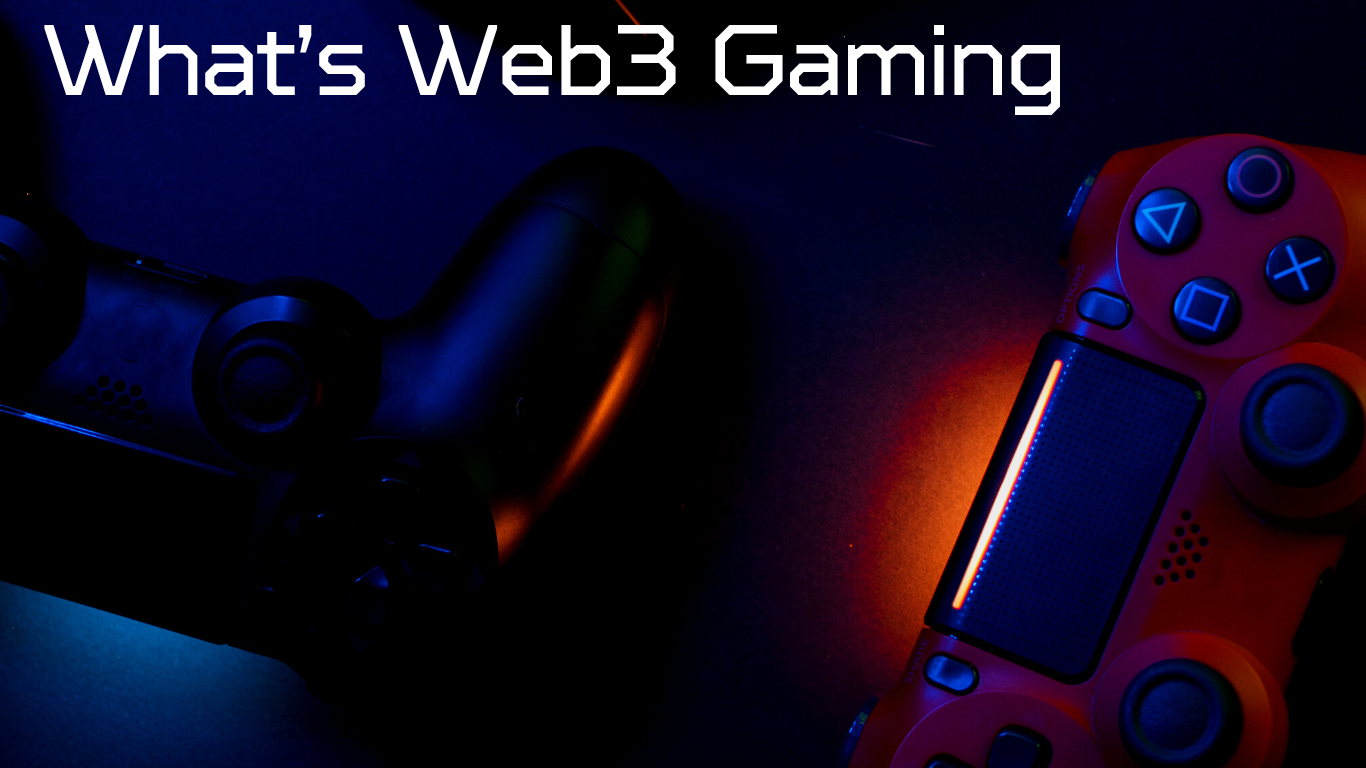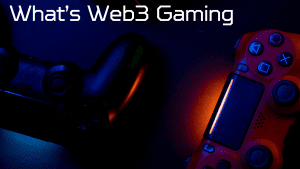
Web3 is a novel internet idea that makes use of decentralized, essentially anonymous resources. It’s distributed among users as opposed to being controlled by powerful tech companies. After web1 and web2, it is the very next technology to deliver.
The gaming industry has always been at the forefront of technology. The phrase “Web3 gaming” has since started to circulate as we enter a new era of innovation. But what exactly is Web3 gaming, and what possibilities can it present for players and the constantly expanding sector?
What is Web3 Gaming?
Web3 gaming is a decentralized gaming process in which any central authority is removed from the operations of a gaming ecosystem or gaming platform, particularly the acquisition of gaming resources and decision-making in all gaming-related areas.
Blockchain is incorporated into the gaming ecosystem when creating Web3 games, giving players a point of view in how and when the game should develop. By providing asset exchange, transferable game tokens, and possibilities for players to earn in cryptocurrencies while playing, Web3 gaming also lays the groundwork for play-to-earn for users and transforms the pay-to-play aspect.
Players can access and completely own in-game digital assets on fair virtual markets that Web3 gaming offers for the gaming industry. These investments are unique and are kept through the form of gaming NFTs.
By connecting in-game assets and players across platforms, web3 gaming also provides comprehensive interoperability among various gaming ecosystems. The blockchain platform that is chosen to create a gaming ecosystem will have an impact on interoperability. For instance, Polkadot or Solana offers the interoperability feature in cross-chain communication bridges.
What are the key features of Web3 gaming?
Web gaming is open source and provides self-sovereignty and decentralization in gaming. The following are some defining characteristics of Web3 gaming platforms:
- Ownership and interoperability
- Old game integration
- Player-driven gaming
- Accessibility and openness
- Earning opportunity
Ownership and interoperability
In long-established gaming, players own in-game items and collectibles, but once they choose to switch gaming platforms, they forfeit all of their possessions. This issue is resolved by Web3 gaming by offering true ownership and platform interoperability. The in-game items that players own on one gaming platform can be transferred to the next.
In web3 gaming, interoperability is essential. Players need not be concerned about losing money because the items can be shared among different games.
Players now have more discretion and are free to switch between games. If you don’t want to use the item, you are under no obligation to keep it close by. They can be converted into in-game NFTs and sold on secondary markets to be used as investments as opposed to one-time purchases.
Old game integration
Another intriguing aspect of web3 gaming is the decentralization of older game models by integrating and modernizing them into blockchain and metaverse platforms. Every player has a favorite game, and gaming is a personal experience. By incorporating players’ favorite in-game items and collectibles into the metaverse, where they can create avatars and trade them, Web3 offers to upgrade well-known and outdated games.
Player-driven gaming
The gaming ecosystem in web3 gaming is customized based on player preferences. Gamers can gain from Web3 gaming in a variety of ways. The first is the “play to earn” component, in which players can make money using in-game items, and the second is “old-game integration,” which satisfies players’ desire to play their preferred games in the metaverse. Web3 gaming also supports self-sovereignty, which is another component of player-driven gaming that works in the players’ favor.
Accessibility and openness
The third generation of the Internet, which has been developed, promises transparency in gaming. To put these words into a clearer explanation, everyone can easily track each transaction because your information is stored on the blockchain. It makes everything equal and establishes a level playing field.
Web3 gaming has a unique characteristic that highlights the distributed nature of the system. Contrary to centralized games, you are not reliant on a single server. Voting agreements can be used to expand blockchain-based gaming with new features. This creates the opportunity for even more accessible web3 games. Additionally independent and running free of interference from any centralized authority, the web3 gaming ecosystem guarantees exceptional availability.
Earning opportunity
With the help of next-generation gaming platforms, users will be able to earn money while enjoying their favorite games wherever they are. On the blockchain, players may also be able to trade and sell in-game tokens.
Gamers will be able to become the product rather than just a consumer in play-to-earn gaming platforms. The chance to upend the gaming industry is enormous. In economically struggling nations, play-to-earn may provide players with a fresh source of income to help them get by financially.
Again, in the gaming industry, in-game purchases are necessary, but the current system for purchasing in-game tokens is rife with issues. With these tokens, there is a serious lack of security, and the game designer has complete control over the economy.
A new economy that is secure, decentralized, and empowers the gaming industry can emerge thanks to tokenization, which also powers NFT functionality and DAOs.
What is the technology stack of Web3 gaming?
The following are the components of the Web3 gaming technology stack:
Web3 libraries/dApps
Game designers and players can interact with the blockchain platform with the aid of Web3 libraries. In-game assets and transactions are supported by the libraries and dApps, which also facilitate smart contract interaction. dApps for web3 gaming are created with the Unity or Unreal SDKs. The Web3 libraries’ role adjusts once the protocol between EVM and non-EVM blockchains is completed.
Smart contracts
Various game processes are monitored and governed by smart contracts. The voting and decision-making processes for game evolution changes are also managed by smart contracts. Smart contracts, which can be tailored to players’ needs, control voting and decision-making for game changes. Most developers write, compile, and distribute smart contracts using the Remix IDE. However, when a local development ecosystem is required, tools like Truffle, Hardhat, and Brownie are simple to use.
Node/Web3 providers
The fact that nodes or Web3 developers can extract gaming data from the blockchain network makes them crucial. Nodes are essential components of the Web3 developer stack for without them, Web3 libraries cannot interact with smart contracts.
Digital wallets
Blockchain-based digital wallets are present on every Web3 gaming platform. Players are recognized by a special wallet address. The in-game assets and various gaming collectibles are stored there. To interact with the blockchain, wallets are a crucial component of Web3 games.
XR hardware
XR hardware includes smart glasses, haptic gloves, scanning sensors, etc., integrating the metaverse with the gaming ecosystem to create a rich and captivating Web3 gaming experience.
Open interoperable media standards
For the purpose of enabling decentralized 3D applications, these standards include texts, audio, 3D scenes, and vectors.
What are web3 gaming opportunities?
All digital games (web3 dApps) built on blockchain technology are closely related to web3 games, also known as GameFi or play-to-earn. Every web3 game should offer players digital currency in the form of cryptocurrency. Additionally, these assets can be traded on various chains and platforms.
All web3 games can be divided into two main categories: play-to-earn and walk-to-earn.
Walk-to-earn
Another type of GameFi is walk-to-earn games. These games are built around a straightforward idea: instead of playing games, you walk around and earn digital assets. This new method rewards players for straightforward actions like walking. There are numerous companies that provide their players with games based on this idea, but two of the most famous names are Walken and STEPN.
Play-to-earn games
Because of its emphasis on decentralization, play-to-earn gaming differs from traditional gaming. This indicates that the game’s creators have no influence over the result. Taking part in the game’s in-game economy can benefit both players and game developers.
These are the most well-known representatives of play-to-earn games:
- Axie Infinity
- Splinterlands
- Alien Worlds
- Silks
Wrap up
Through the incorporation of blockchain and metaverse technology, Web3 gaming has completely changed the gaming landscape. By removing centralized game administrators and platform owners, it has revolutionized the gaming industry.
Players and end users are also very vocal and obvious. To keep up with shifting scenes, studios and developers must also be aware of their deliverables. A great time to start playing web-3 or blockchain games is right now. The opportunities are enormous and will only increase as the transition to web3 becomes more commonplace.
Web3 gaming is also driving the economic side of the gaming industry with the help of ground-breaking technologies like blockchain, DAO, and the metaverse. It is assisting gamers in engaging in lucrative activities like play-to-earn through NFTs and in-game trading of digital assets.Web3 gaming is a step in the right direction for the future of the digital gaming industry.
